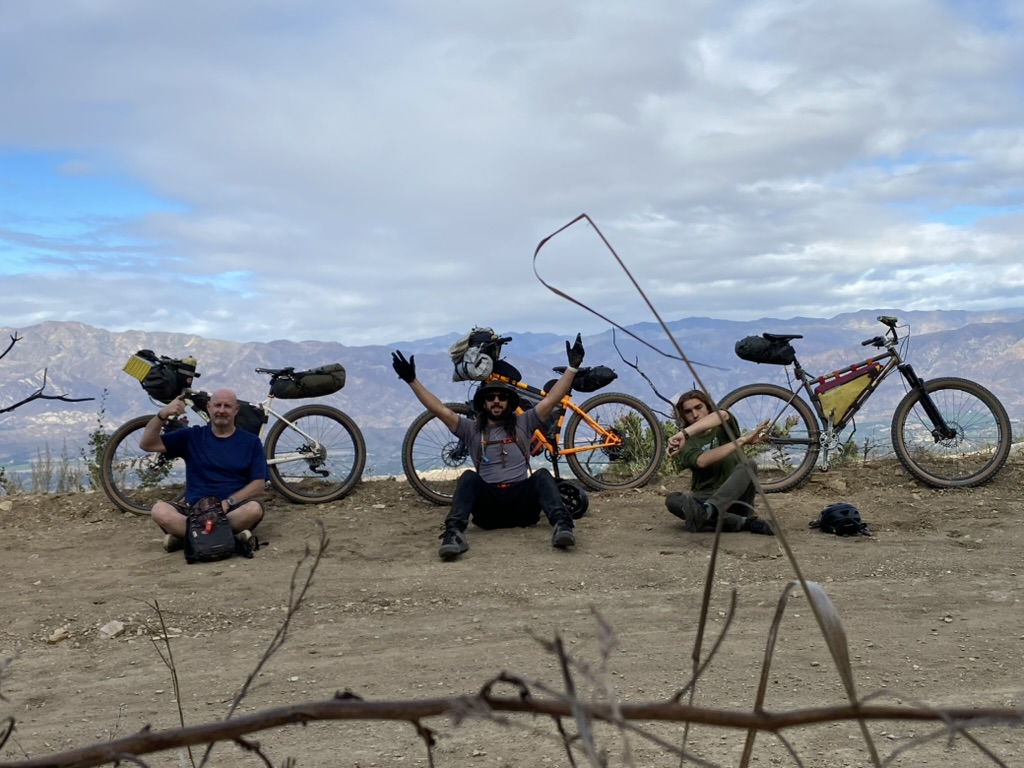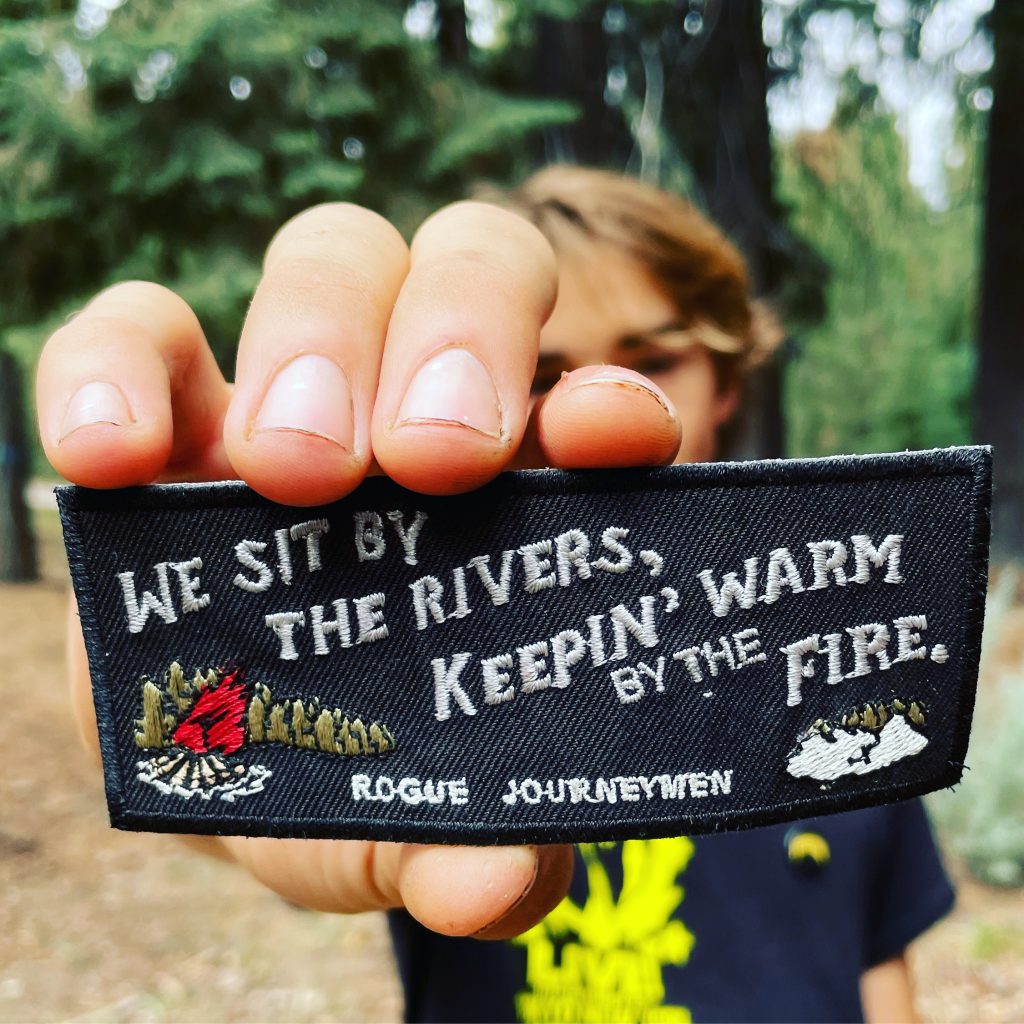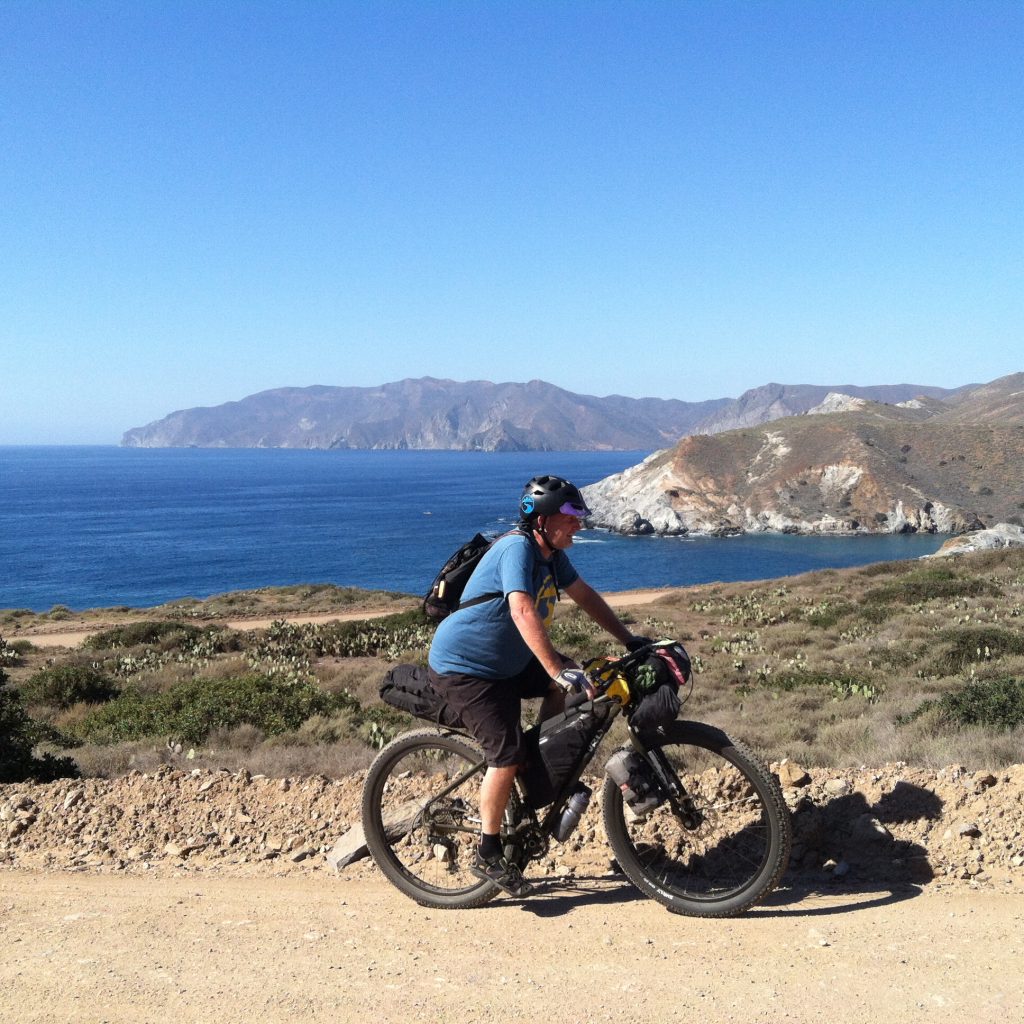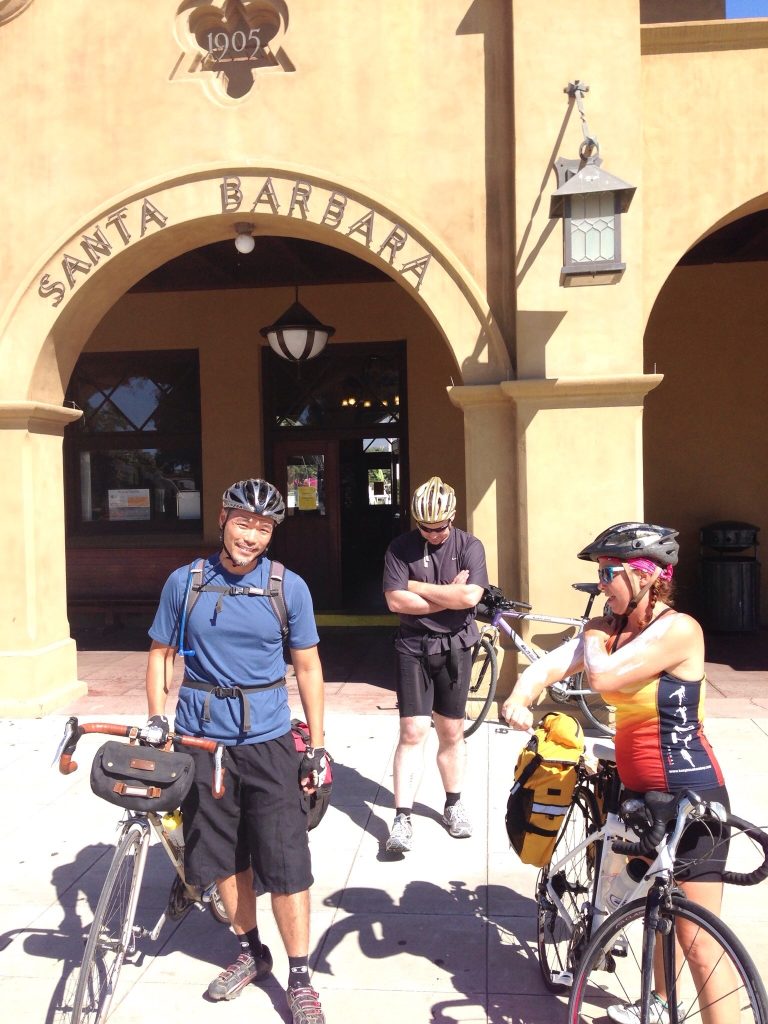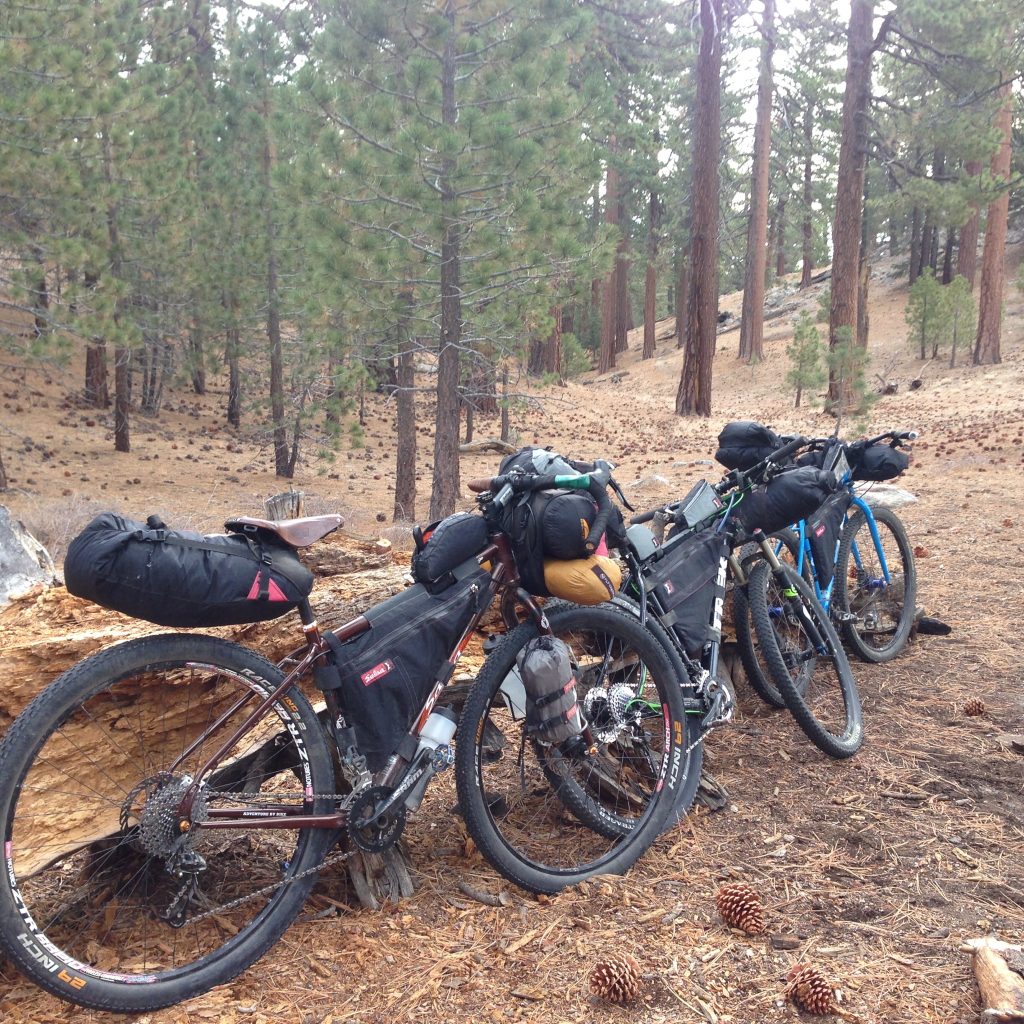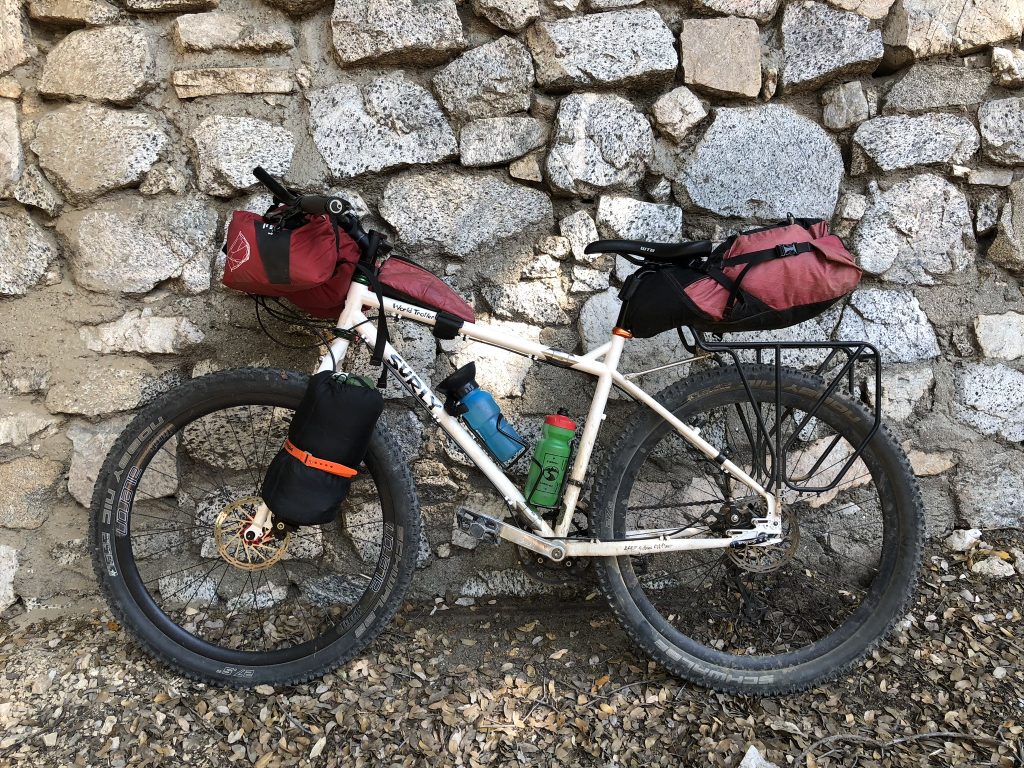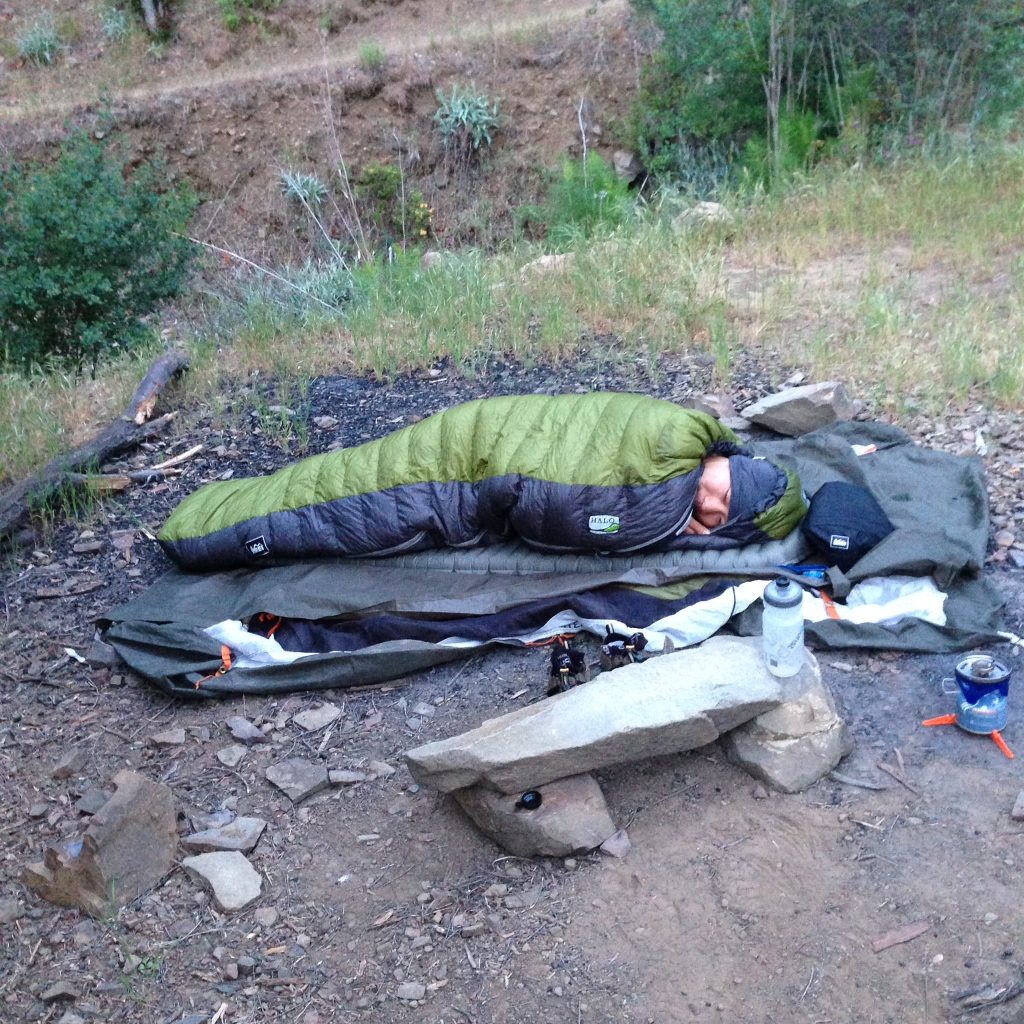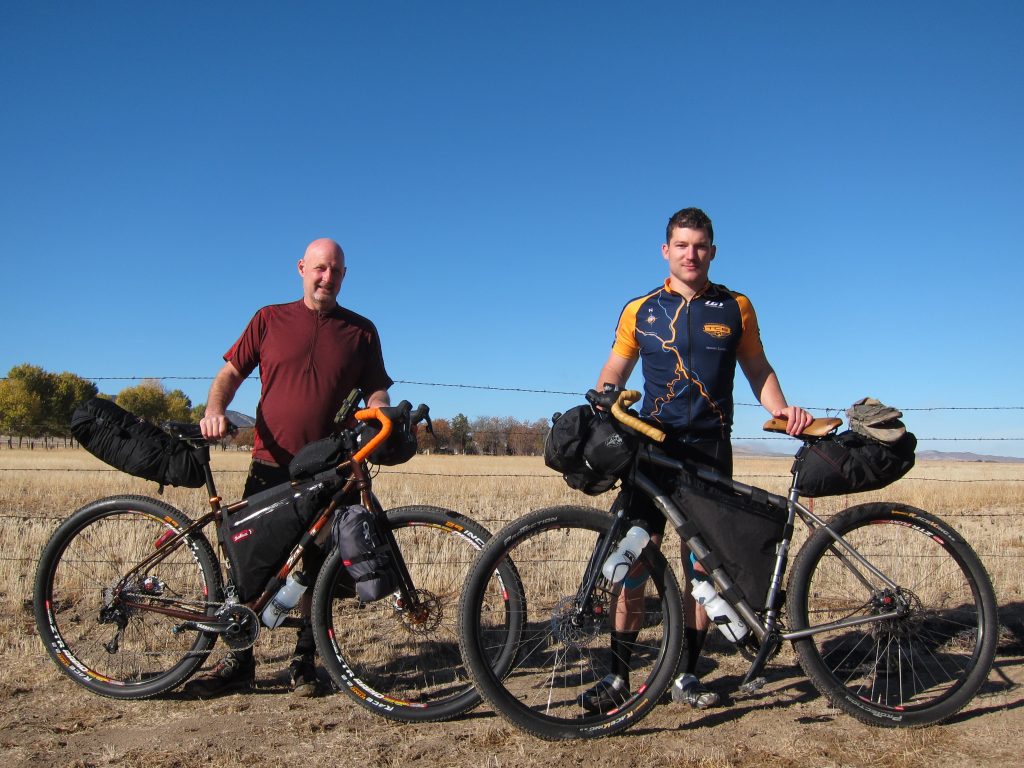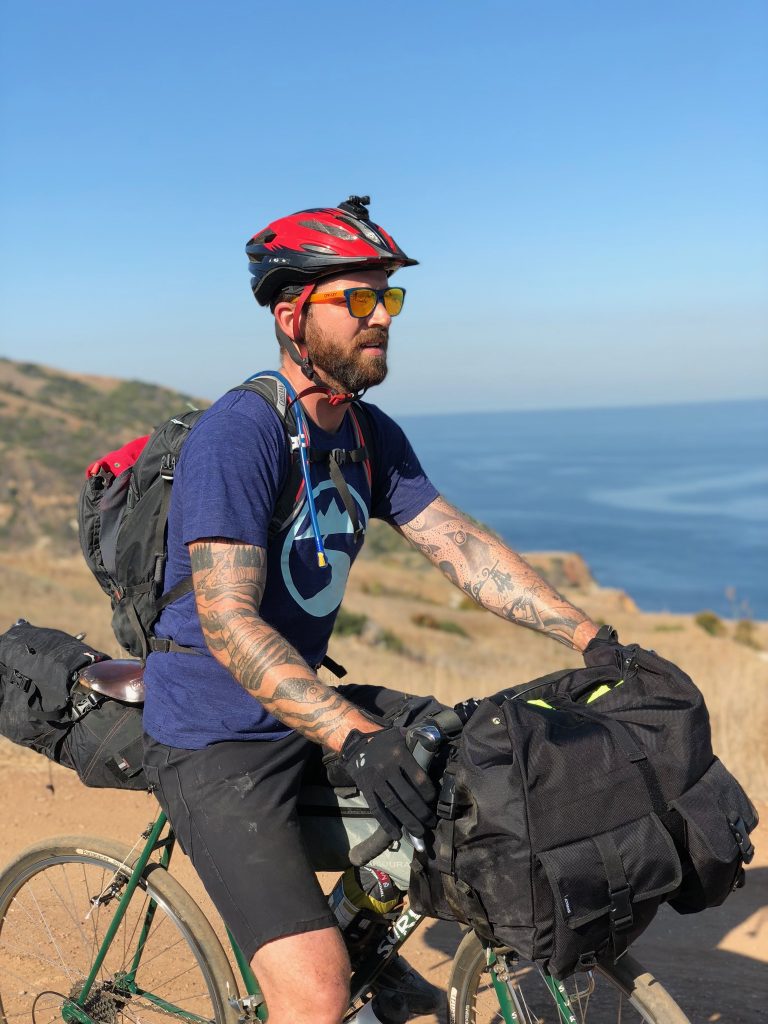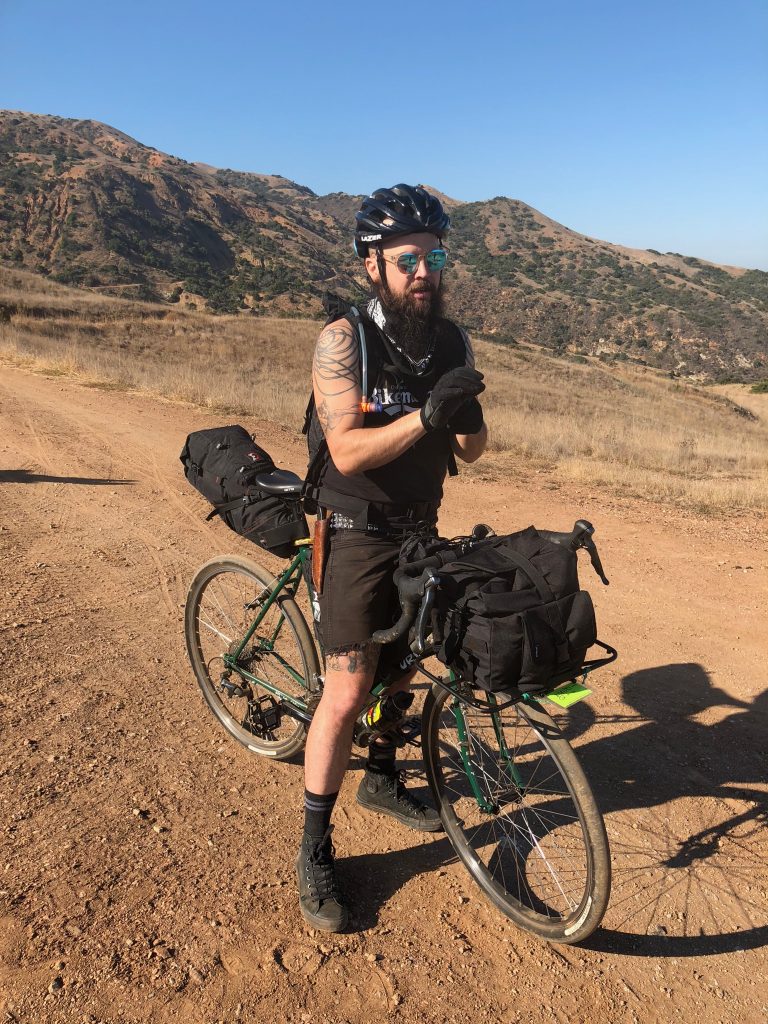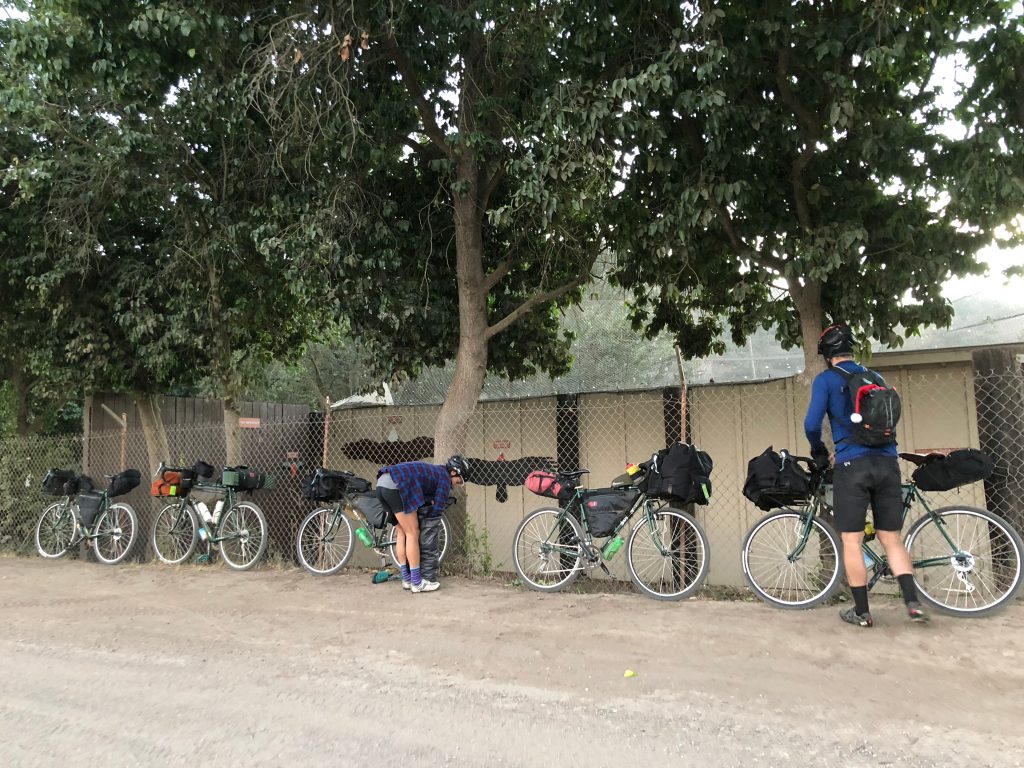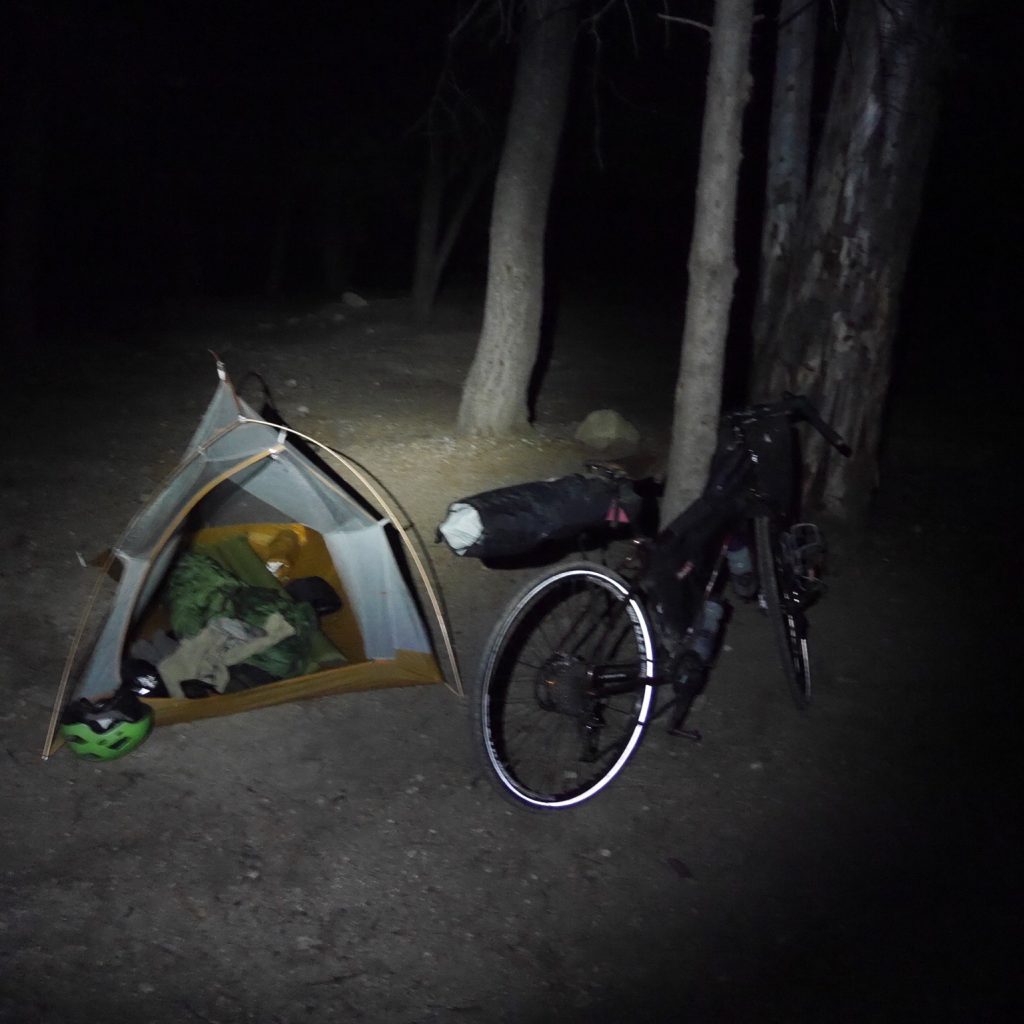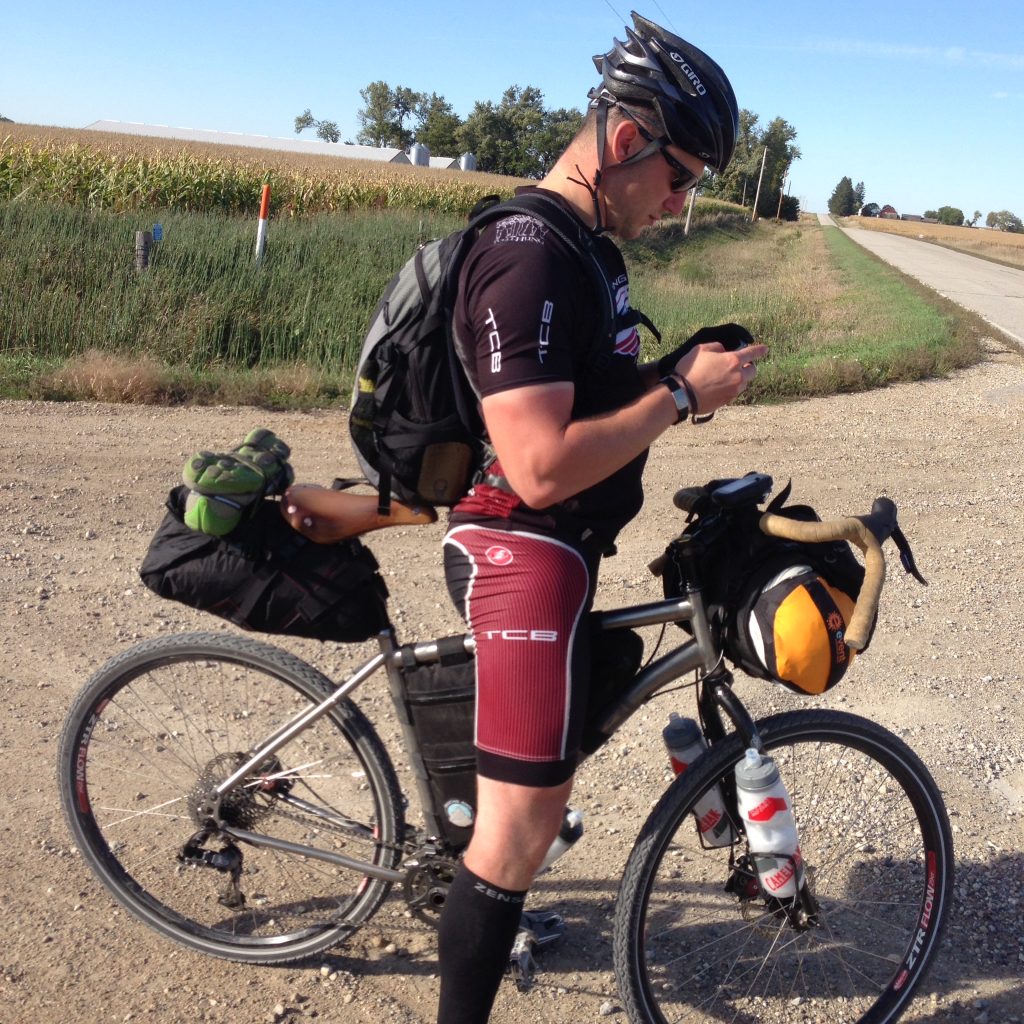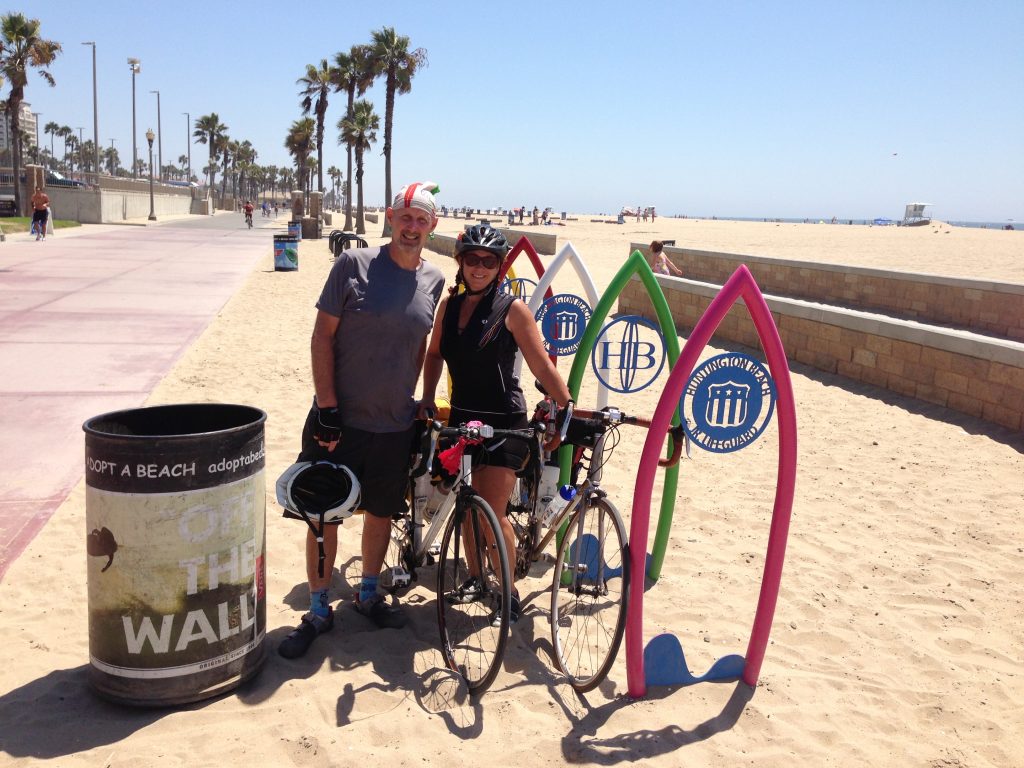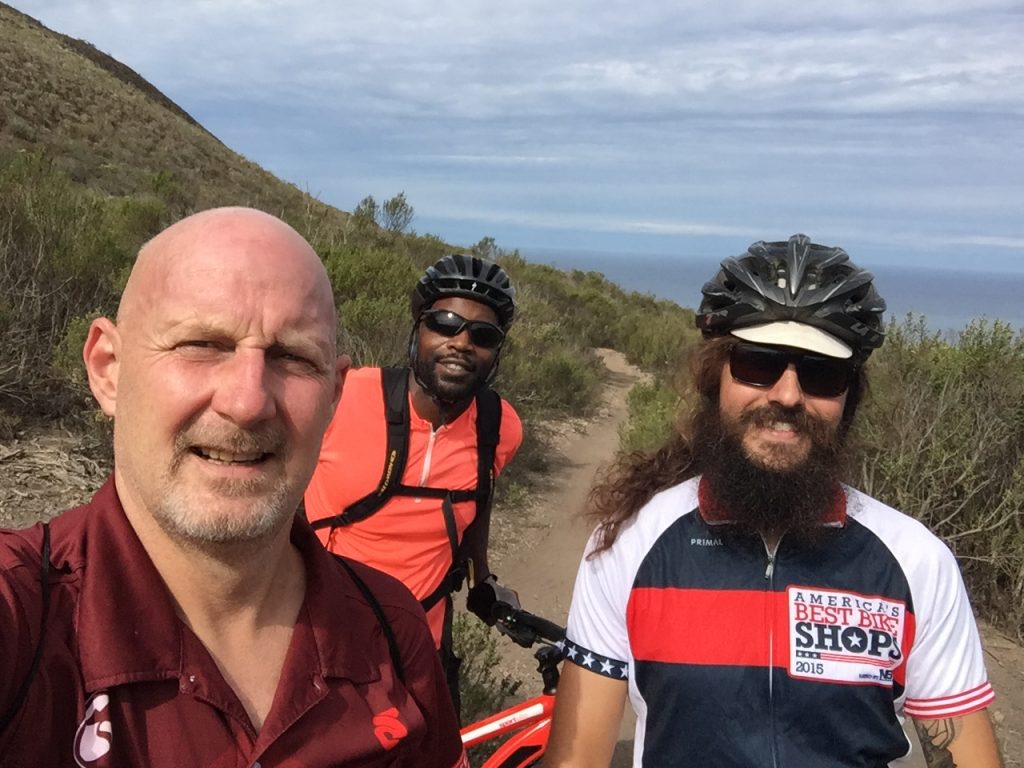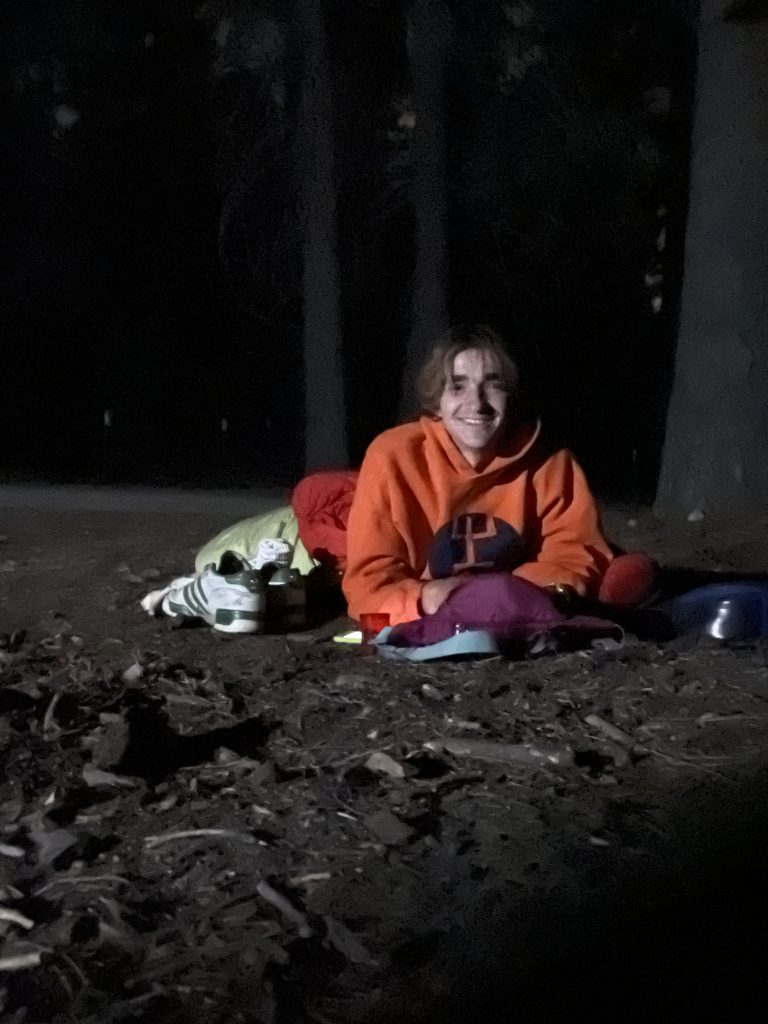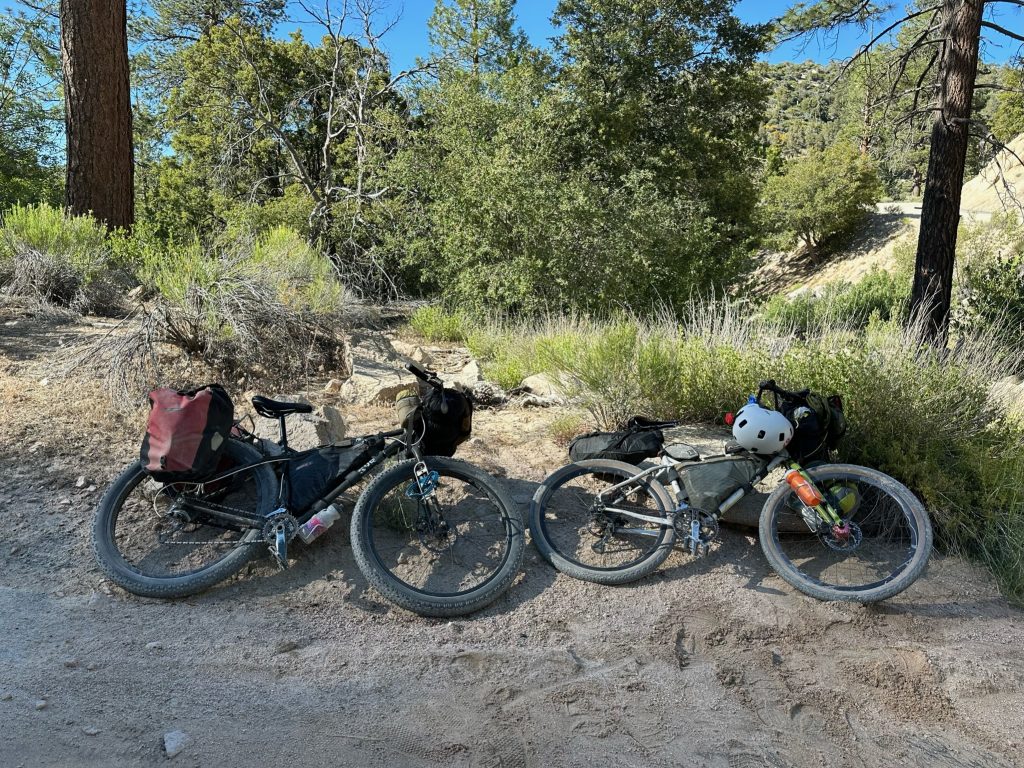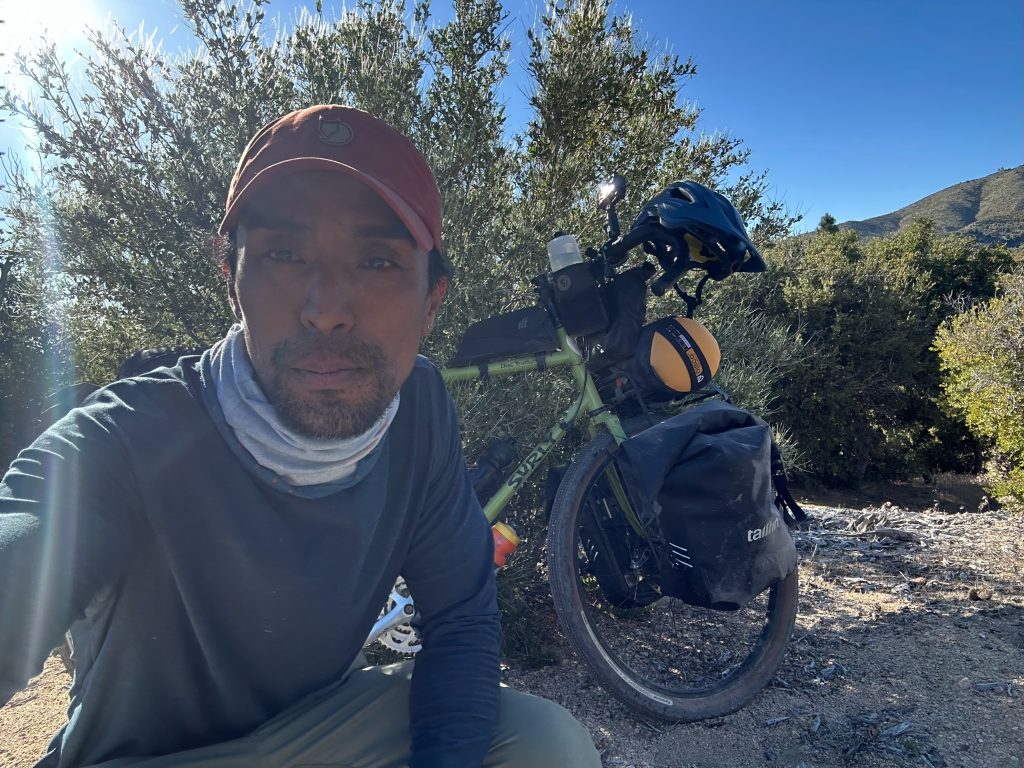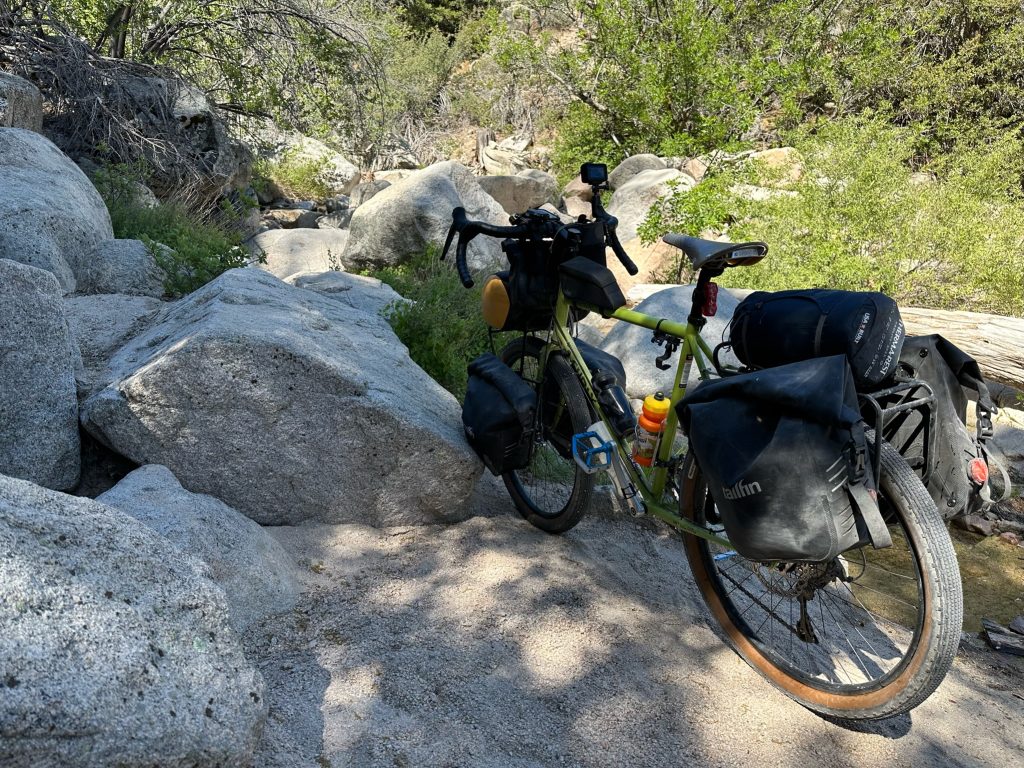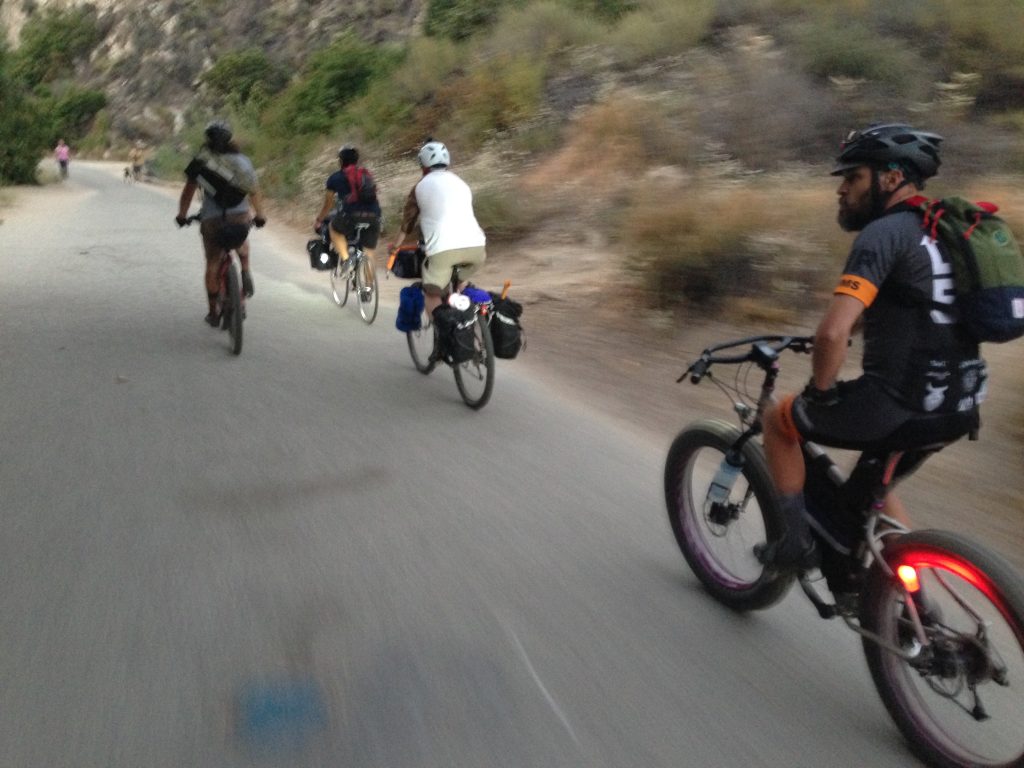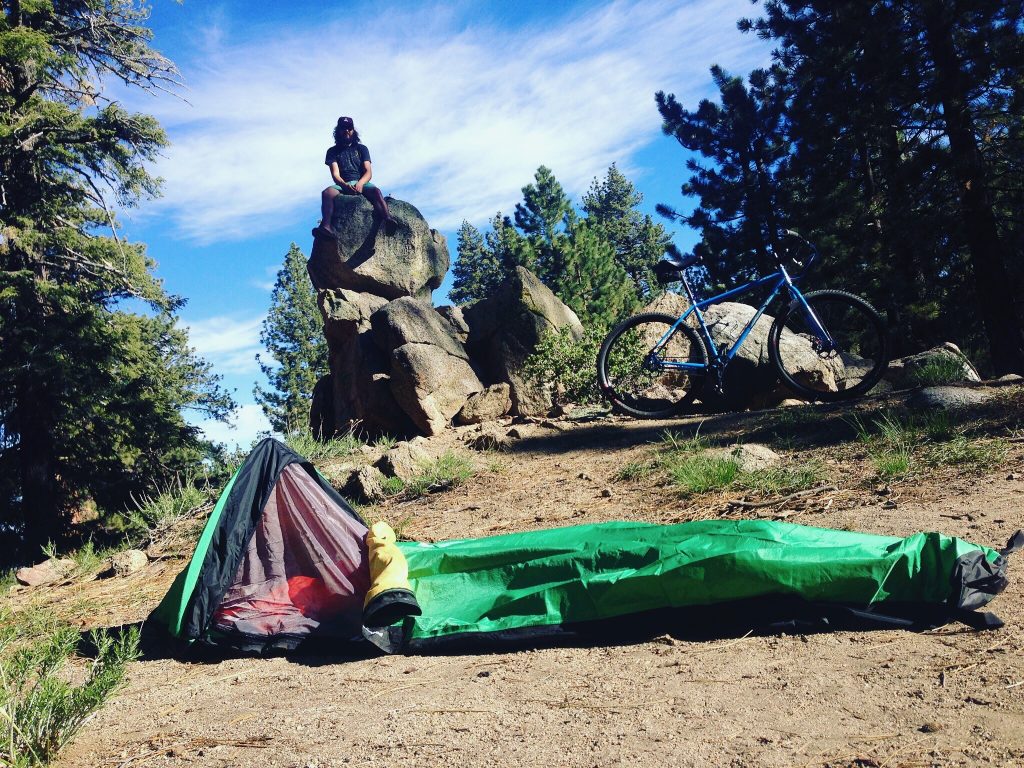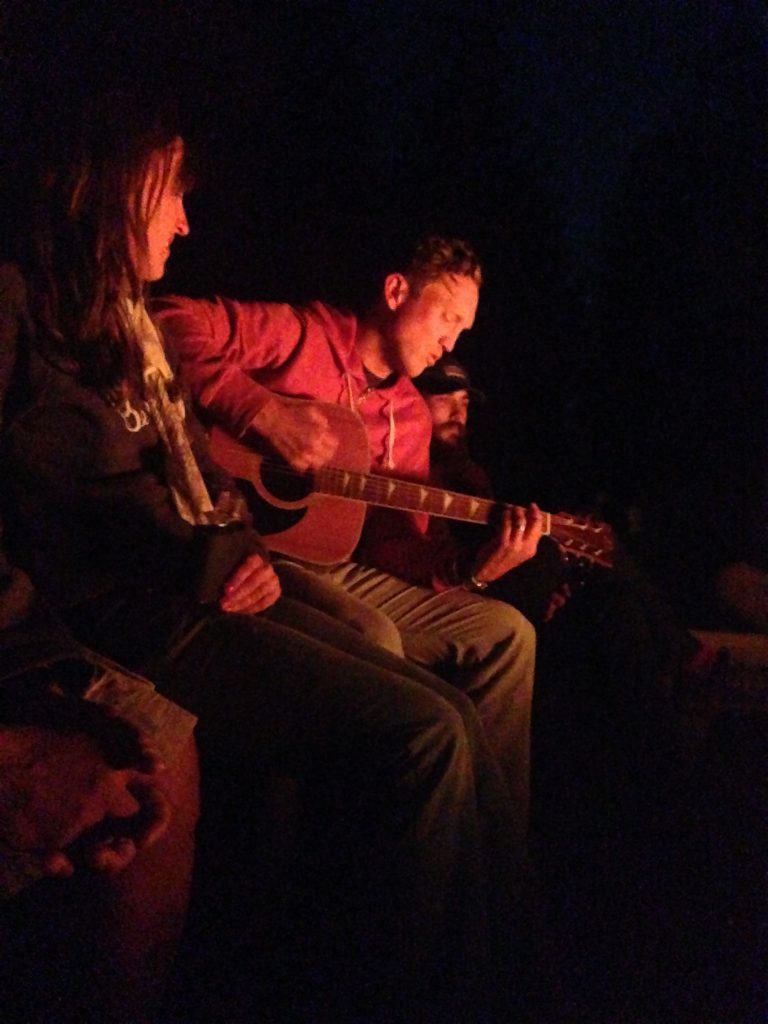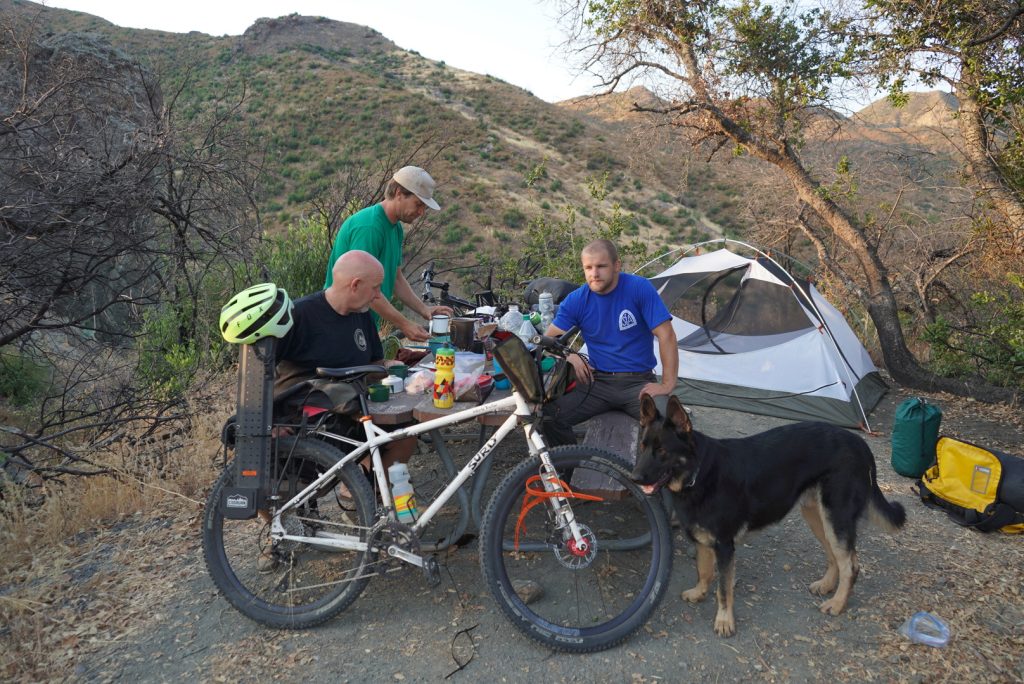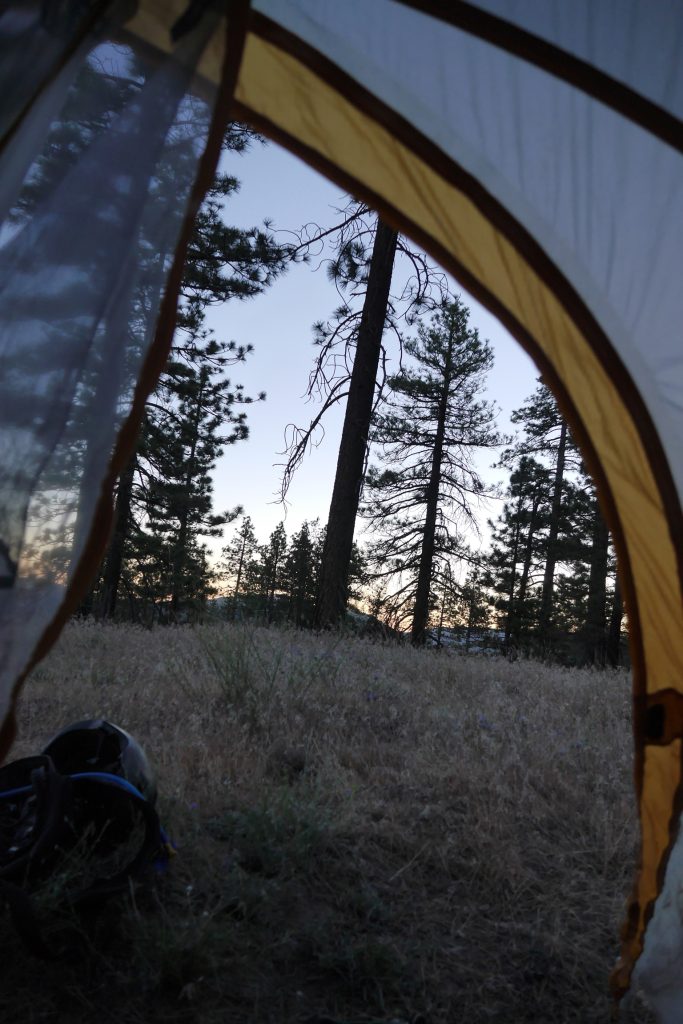We regularly go bikepacking from our shop Topanga Creek Outpost and have been able to ride with a lot of people with a whole slew of different set ups. We also find ourselves chatting with people curious about bikepacking who fear they don’t have the right gear or want to know what we recommend. Because no two people are the same the answer varies for as many people as live on the planet with a bikepacking plan. Here is a little information that might be helpful to at least have a starting point and here is a link to Max’s first time bikepacking for some insight for someone with zero experience.
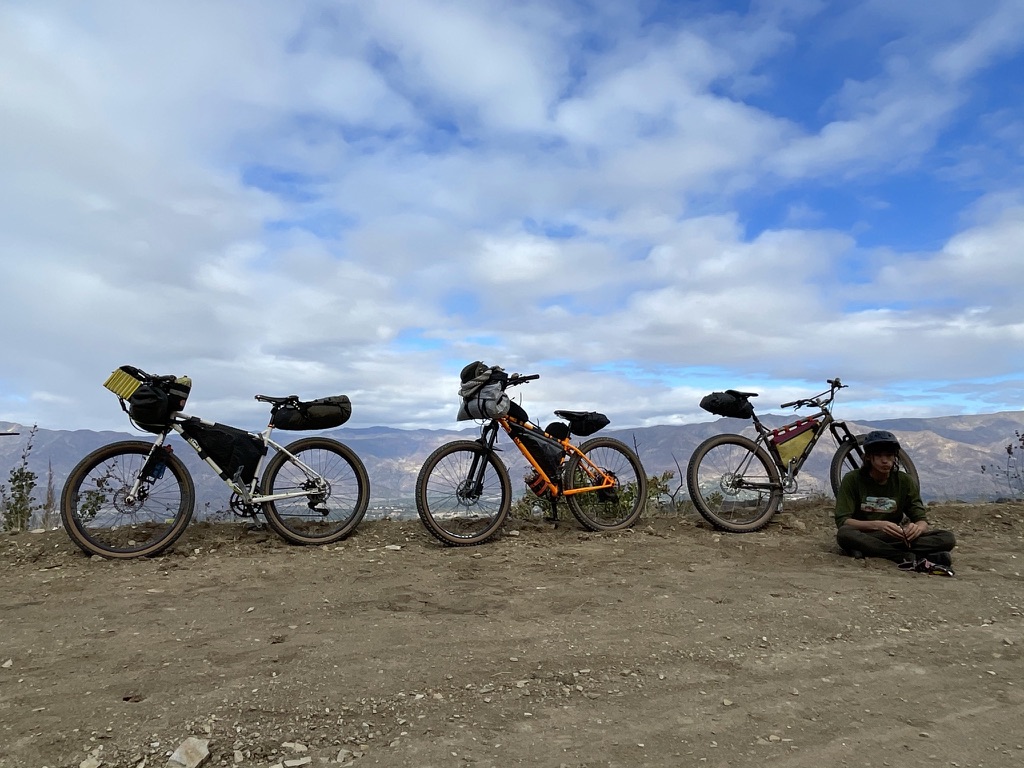
Bikepacking explained. Three different methods discussed to get you going.
Bikepacking is a fun way to escape for a long trip or just for an overnight with your gear on your bike. We like to go on adventures frequently and do a lot of short trips for just one or two nights from the bike shop. There is not a right way or a wrong to go bikepacking because everyone and every bike are different. Every place to go is different, meals are different for all of us and how we get to the trails or roads is different. It is all bikepacking if you pack your bike and go so do not worry about doing it right or wrong. If you only have a backpack and want to fill It up with gear to go on an adventure, please do that. If you want to load up just a few changes of clothes and plan to stay at hotels and eat at restaurants, far be it for us to question anything. For that matter, hotels and restaurants sound terrific.
If you are planning to travel with some gear to camp, eat and explore off the beaten path there are a few things that will make the experience a little more comfortable and different options for carrying your gear on your bike. Here are the three scenarios that we feel fall under our bikepacking umbrella:
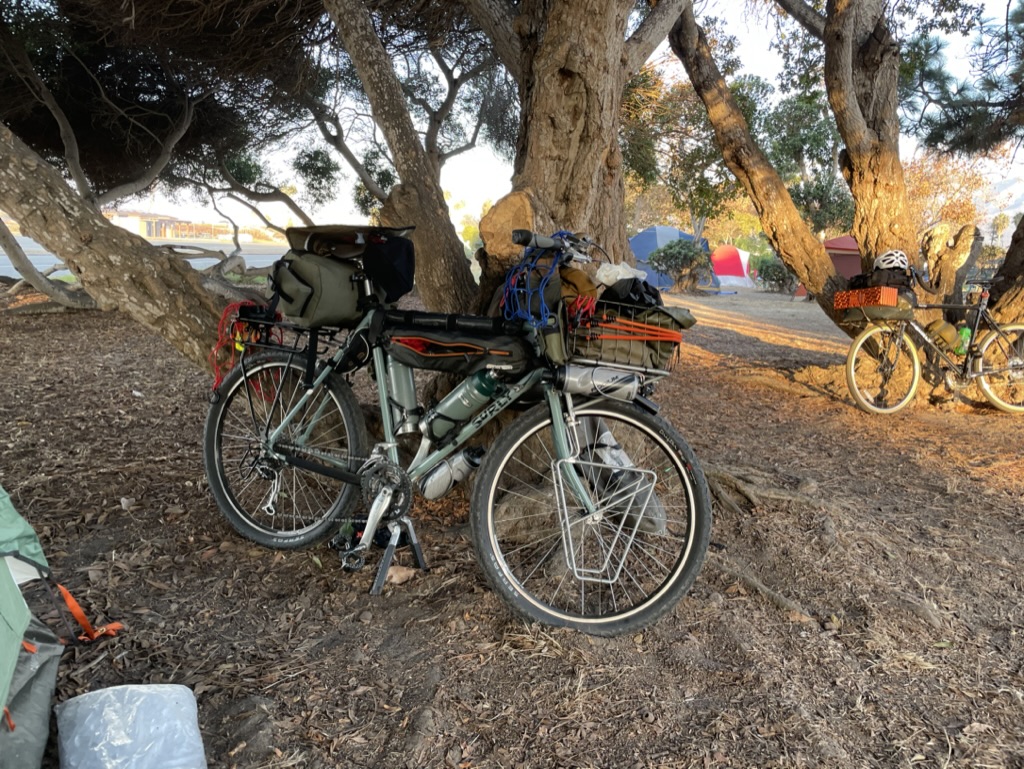
-
- Small backpack and no other gear.
Bringing a couple changes of clothes and stay at hotels and restaurants. (Ultra-fast bikepacking/racing folks do something similar but stay outside and eat at convenient stores) This can be done with about any bike for anyone that wants to start immediately. If you happen to live in Southern California in the Los Angeles County area near us, we have a suggestion that can be applied to about everyone in some way. We suggest a first trip is taking Amtrak with your bike to Ventura (It is about an hour train ride) and then ride along that super cool bike path to Ojai and check into one of the hotels in Ojai. Stop at a spa, enjoy dinner out and sleep in comfort. Have a friend join you or meet up during your overnight. Get a ride back or reverse course and ride to the train for a train trip back. Congratulations, you have now gone bikepacking. You packed your bike, went somewhere and had an adventure.
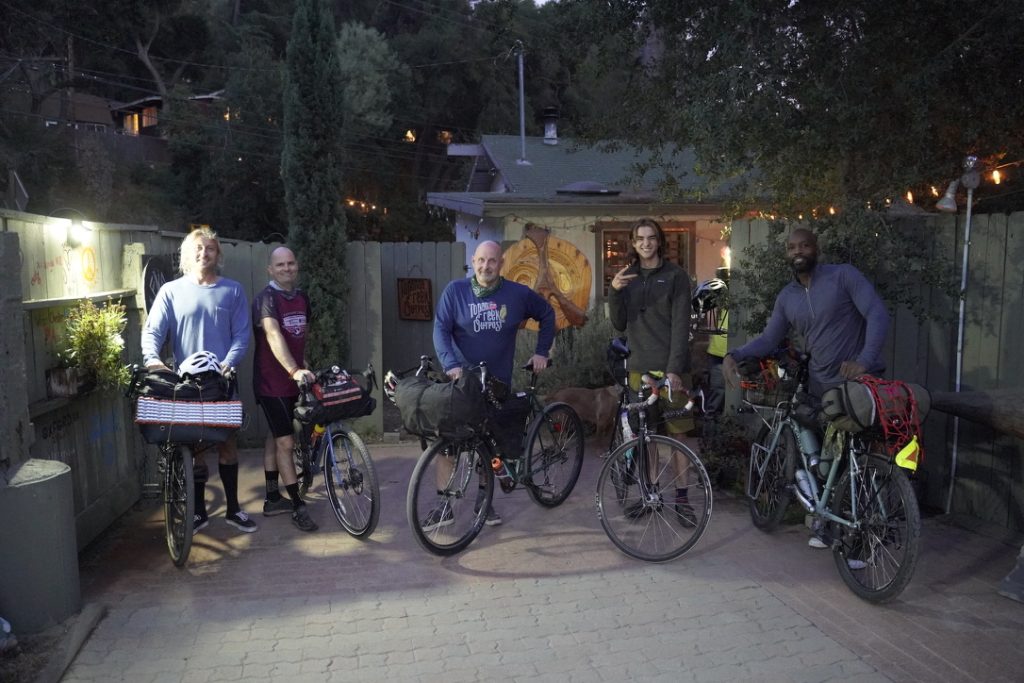
-
- Rear rack (and/or front rack) with panniers and go camping somewhere.
Panniers are those bags that hang off a rack. A bicycle rack attached to the bike usually over the rear tire is pretty common although some prefer front rack only. It does not really matter, and we do not’ have a strong opinion on preference if you prefer front or rear racks. Panniers are like buckets that you fill with snacks, bags, cooking supplies, sleeping bag, tent, change of clothing and a deck of cards. Panniers are very versatile for adventure because they typically clip on and off the bike easily. Panniers often carry a lot of gear so if you like to bring lots of creature comfort, it certainly is an option. If a lot of your trip is on roads panniers can be nice and convenient. Jules uses panniers for all his cooking equipment off road or on road.
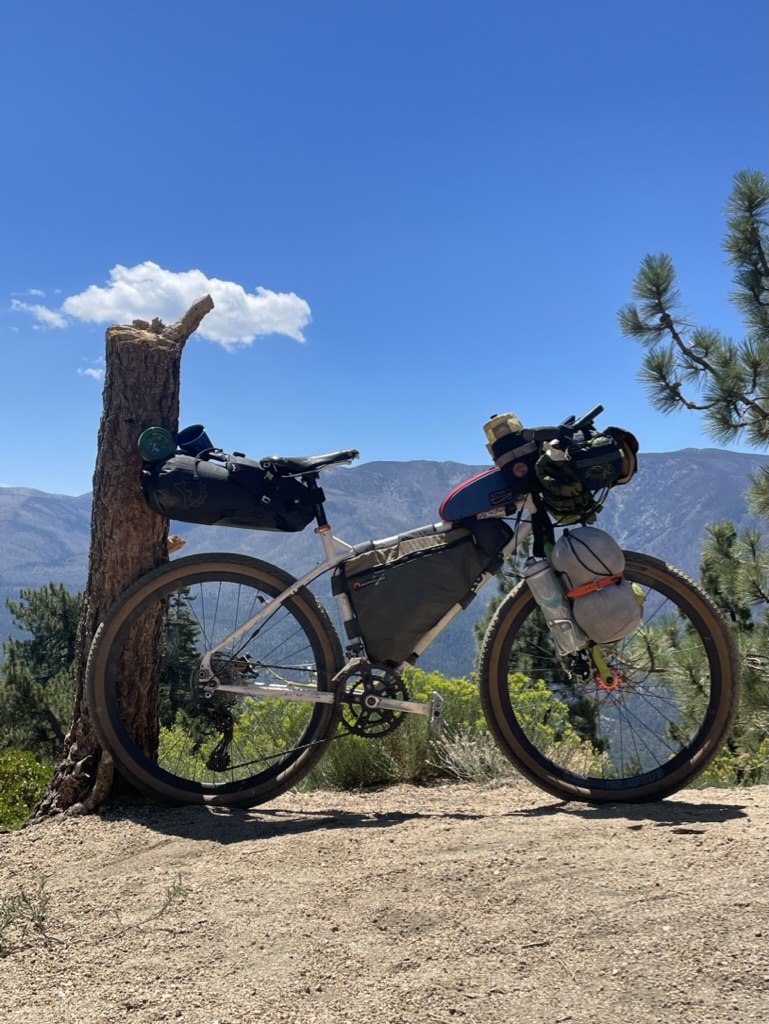
-
- Bags all over.
Bags hanging from handlebars, inside the frame and seat post are probably the most common bikepacking set ups. At least they are most photographed set ups for Instagram. The photos make enjoyable content in addition to some decided conveniences, too. Bags all over are Chris’ preferred set up for overnights especially if a train is involved. Maneuvering a bike with bags can be simply easier and a little less wind resistant on the open road. On narrow single-track bags are less likely to get caught on branches, boulders, or trees. Up at Skyline Trail in Big Bear there are some spots that you must pick your bike up to get through and the sleeker the better. If dirt is your thing and you have no preference, we would say consider bags. (But again, whatever works for you is OK). A whole bunch of bikes dedicated to bikepacking have the capability for water and gear on the fork. Most set ups for bags also use those eyelets on the forks with specialty cages that can carry larger water containers or even a tent. Frame bags are often special to the frame and can be a challenge to source if details matter. We have been known to fit things that were not perfect without ever noticing once we start riding. A little extra space at the triangles or space lacking at the corners is not a big deal if the bag is secure.
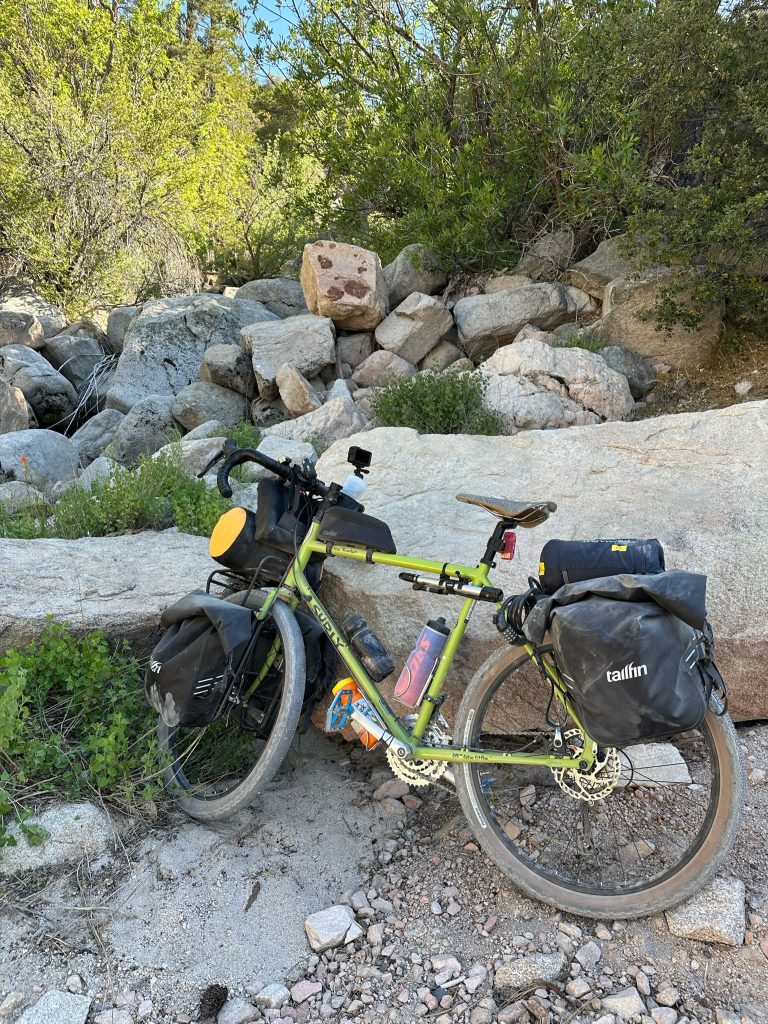
Alex’s Surly Disc Trucker he modified for his specific usage.
Another option is a front basket or a hybrid of bags and racks but hopefully you have the basics. Take everything out of the backpack you might have used for hiking, stuff it on your bike and go on an adventure and you are bikepacking. That is all there is to it. Hope to see you out there. And you have some time to enjoy the outdoors and UnPredict Your Journey.
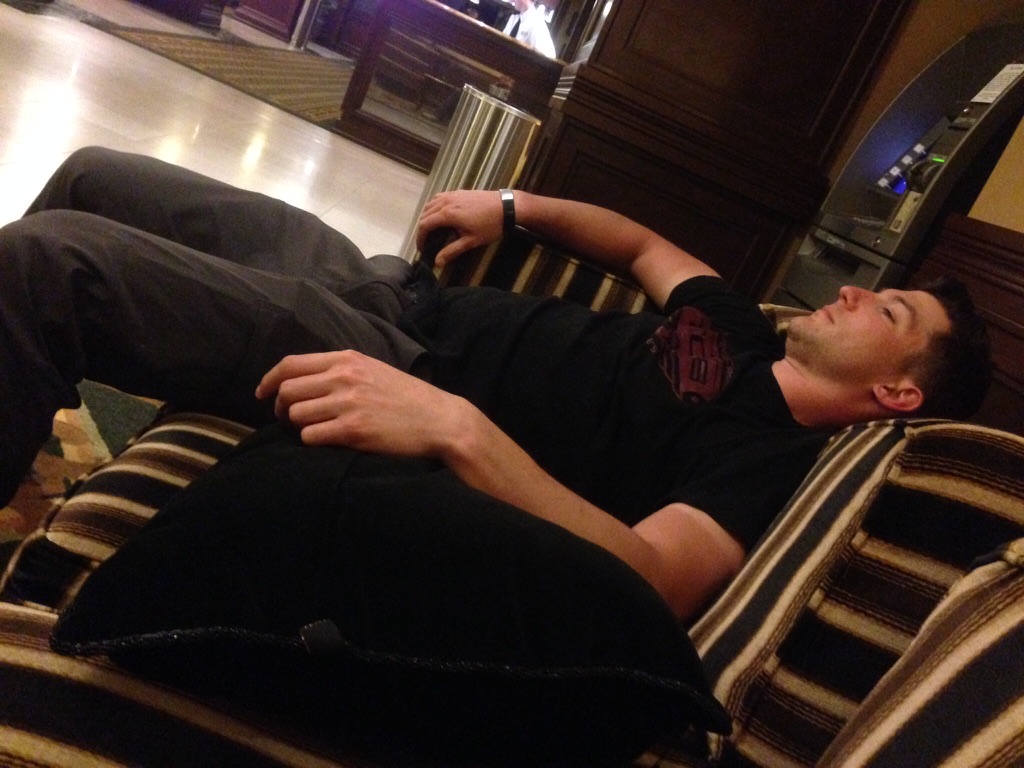
Steve likes nice hotels. This is Steve bikepacking across Iowa staying at the Julein Debuque.
